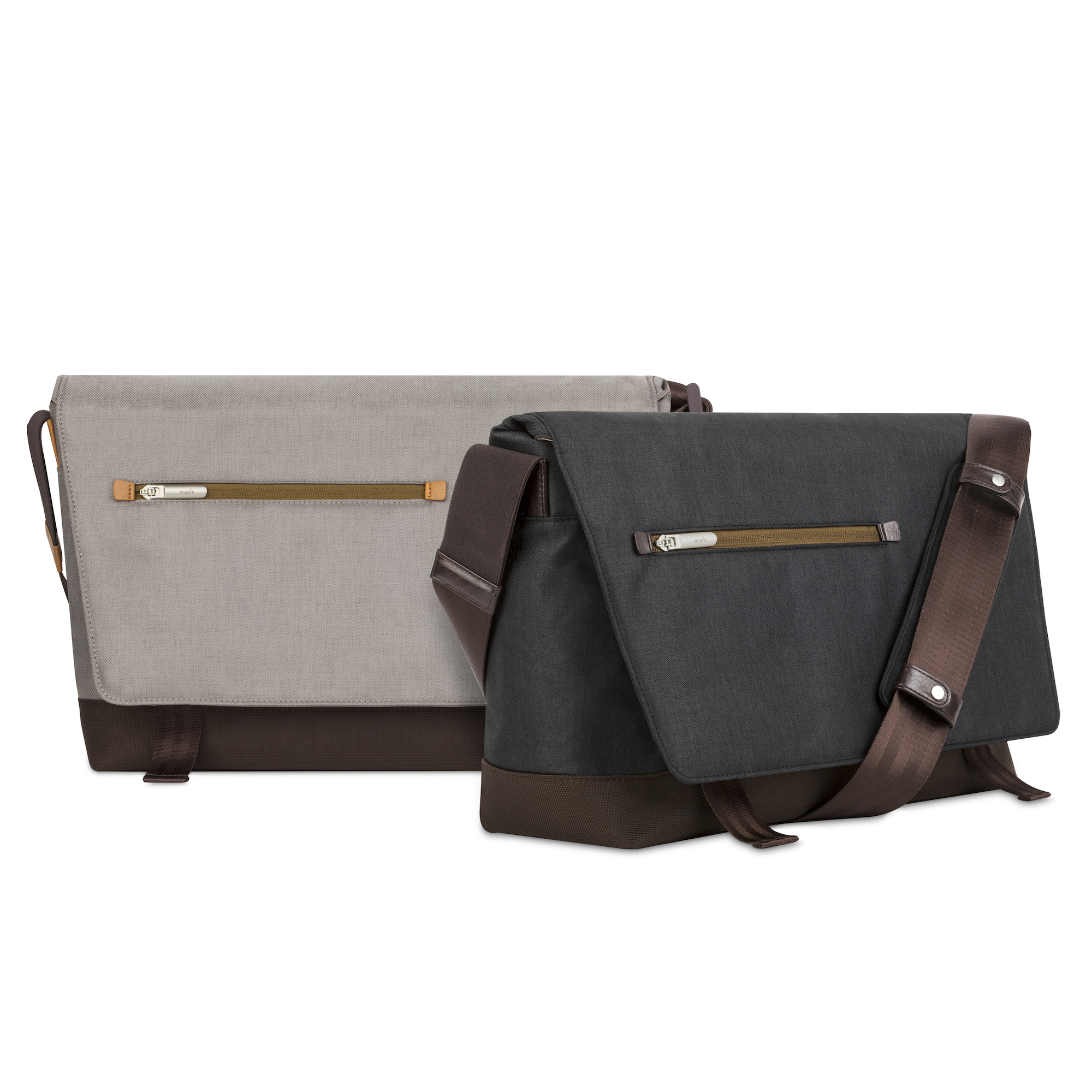
by Lidia Paulinska | Dec 8, 2015
One of the challenges in today’s busy world is finding the time and taking the time to relax your body and mind. One of the methods is through meditation, but what happens when you meditate and you don’t know if you doing that right? You have all those thoughts running through your brain that often are hard to silence and let you relax. Solution? Muse, the brain sensing headband was created to help us meditate easy and experience all the benefits of meditation and relaxation. The headband equipped with sensors can sensed the EEG brain activity and connects to a smart phone app via Bluetooth. The app not only has the guided relaxation sounds, but also has a tracking screen so you can see your progress.
Getting in to a relaxed state is not as easy as it sounds, based on a study by the psychologists at Harvard University. Most people spend 47% of their day thinking about something other than they are currently doing. That is also the case for people who mediate or try to relax. The Muse headband helps train you in 3 minute sessions, to control your stress and tension and move to a productive meditation.
With device like Muse you visualize with your audio representation what is happening in your mind with the weather metaphor. So if you have Muse headband on you and you occupied with many thoughts it would sound stormy and windy. Muse will help you calm and find peace by breathing exercise and focus exercise. The app has graphs of the progress and stress in the current session and allows you to track prior sessions. This tracking allow you to train yourself to have a productive relaxation and meditation session which will bring increased focus on activities and tasks following the session.

by Lidia Paulinska | Dec 6, 2015
Kingston just expanded its HyperX headset line with the new Cloud Mav Edition, Freestyle Series. The limited edition over the head and over ear headphones are designed for the serious gamers. The headphones are used in serious eSports competition including Intel Extreme Masters, Brazil Game Show, China Joy, DreamHack, gamescom and PAX, where is highly appreciated by them. This apprecaiation is not just because of the performance but also their jazzy look, which is a loving baby of the cooperation between Kingston Company and the artists.
The headphones feature a large memory foam ear cushions surrounding the high-fidelity 53mm drivers, a closed cup design and detachable microphone. The two set of ear cushions (leatherette and velour) provide excellent sound isolation, so background noises in the game and sound effects can be clearly heard. One of the challenges with gaming headphones versus general listening headphones is the how the sound is separated to insure that voices come out clearly over the background. HyperX headset uses a separate detachable microphone to insure high quality communications in multiplayer games. The microphone uses a 6.5 mm diameter electret condenser capsule that is configured in a Cardioid pattern to minimize environmental noise pickup.
The headphones and microphone system is a wired design that is compatible with PCs, notebooks, tablets, mobile phones, airplane adapters and PS4 consoles though a standard 3.5mm mini stereo jack connector. The wired design works well for multiple people playing in one area as well as eliminating noise and false sounds that may come from other electronic devices. Most wireless headset systems pickup sounds from cell phones, tablets, laptops and other devices when connected to consoles and gaming computers. The high quality connection cable and the memory foam ear cushions give a very clean and isolated experience allows for deep immersion in the gaming environment.
The headphones are available from most retail channels for holiday season and comes with two-year warranty.

by Lidia Paulinska | Dec 6, 2015
This holiday season Moshi brings to its variety of electronics accessories new stylish and tech-savvy, messenger style Aerio bag. Designed for 15” laptop or tablet has also many, some expandable, packets/compartments for camera, headphones, wallet, phone etc. The bag features a proprietary ViscoStrap solution, the strap that reduces the effective weight of the bag on your shoulder when it is carried. The bag comes in two colors – Black and Grey. It is made of sturdy, premium, water-resistant fabric with stylish leatherette trim. It is All-in-One bag solution for professional, tech community that cares for design and usefulness.
The bag is very functional and addresses the need for the modern traveler – whether it is plane, train, bus or car – to have their laptop/tablet with them, along with the camera, cables, chargers, and purse supplies. The size is set nicely for not being too big, but large enough to hold what is needed. The bag is sized to fit under the seat for airlines, so you can have your items near you for flights.
by Tomasz Kolodziejak

by Lidia Paulinska | Dec 6, 2015
On December 2, 2015, in a live encore performance from the Metropolitan Opera House in New York City, Fathom Events presented Alban Berg’s masterful opera Lulu, featuring Marlis Petersen in the title role, Susan Graham as Countess Geschwitz and Johan Reuter as Dr. Schon. This was a very special performance, for it was to be Ms. Petersen’s final appearance in the role of Lulu after a professional career of delighting audiences here and abroad.
Alban Berg (1885-1935) was an Austrian composer, heavily influenced by Arnold Schoenberg and the culture of fin de siécle Vienna. He composed two seminal operas which were the most innovative and influential works of the 20th century: Woyzek (1925) and Lulu (1937). He is known for combining 19th century Romantic elements with Expressionistic idioms of the 20th century.
In this visually stunning production, the romantic lyricism of the music works in counterpoint to its atonality, and is complimented and contrasted with the stark, black and white expressionistic rear-screen projections, which, through their often violently changing patterns, create a kind of choral commentary on the action. Sudden giant swarths of black ink wash across the screen from one end of the huge Met stage to the other, and just as suddenly may dissolve into indiscriminate lines and circles with faces emerging from the seeming visual chaos. Characters on stage may wear cylindrical cardboard coverings over their entire heads featuring painted images and Lulu herself, as the personification of lustful, carnal desire, may append to herself cut-outs of her sex, becoming a cartoon-like nude.
Projection Designer Catherine Meyburgh, Set Designer Sabine Theunissen, and Costume Designer Greta Goiris all fulfilled the extraordinary task of creating visual magic and Maestro Lothar Koenigs along with the magnificent cast of Lulu were all instrumental in creating a memorable experience that will live on in our imaginations long after the final curtain.

by Lidia Paulinska | Dec 4, 2015
As part of their excellent “event cinema” series of filmed theatrical presentations, Fathom Events (fathomevents.com) screened William Shakespeare’s The Winter’s Tale for a one-night-only showing November 30th at hundreds of movie theatres throughout the world. This masterful production was performed by the Kenneth Branagh Theatre Company at the Garrick Theatre in London with Mr Branagh doing double duty as director and lead character Leontes and brilliantly complimented by a stellar performance by the incomparable Judi Dench as the redoubtable Paulina.
William Shakespeare penned thirty-seven masterful plays and 154 sonnets. Over the ensuing centuries there have been many attempts to categorize his plays, to fit them into a specific genre niche like “tragedy,” “history” and “comedy,” with many easily conforming to one or another of these categories, such as Hamlet, Macbeth, et al. who have earned their rank as true tragedies as evidenced by the body-strewn stages in their final scenes. Furthermore, those works that may be easily labeled “histories” include of course Henry IV, V, VI, Richard II & III, et al. since their primary focus is in fact on English history, albeit fictionalized like our contemporary historical novels.
Perhaps more problematic however, are those works that critics have attempted to label “comedies.” These so-called “comedies” share little in common with our 21st century American notion of what is in fact a true comedy. What often gives these classic works new vitality and relevance for a contemporary audience are well-positioned and thematically relevant directorial interpolations such as original music, zany by-play among the characters, imaginative staging and set design, etc.
Called “a timeless tragicomedy of obsession and redemption,” The Winter’s Tale is all of that and more. Wisely avoiding getting into the “genre controversy,” the scholar/critic Harold Bloom has observed, it is a vast pastoral lyric, “a mythic celebration of resurrection and renewal,” and of course a psychological novel of the first order, dealing as it does with the destructive force of the jealous rage experienced by Leontes toward his boyhood friend Polixenes whom he mistakenly believes to be responsible for the pregnancy of his beautiful and virtuous wife Hermione. It is Othello revisited, yet with refinement, for Iago has been internalized into the psyche of Leontes whose diseased intellectual activity renders him indifferent to moral good or evil.
If Act One deals with the destructive force of sexual jealousy personified by Leontes which causes the spiritual and physical death of his innocent wife Hermione, Act Two takes place sixteen years hence and, in contrast to the tragic events of the first act, opens on a high-flying festive note, featuring rollicking folk song and dance, foreshadowing Leontes’ mythical and redemptive reunion with a miraculous resurrected Hermione.
The final scene offers us a redemptively charged tableau vivant of Leontes, Hermione, and their sixteen year-old daughter reunited and thus a Leontes redeemed.
What distinguishes Shakespeare’s comedies from his tragedies is principally in the final scenes: In the tragedies, most of the principal characters wind up dead, whereas in the comedies, reunification and redemption prevail, marriages abound, and presumably everyone lives happily ever after, or as Shakespeare indicates elsewhere, “All’s well that ends well.”
And so too with Mr Branagh’s rich and compelling production: all was very well done indeed.




